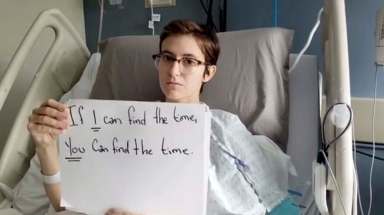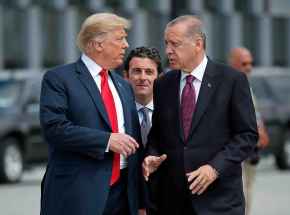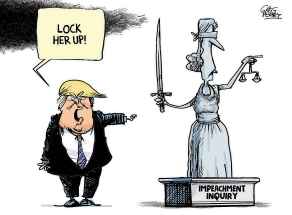Pulling your punches Royal MTC's fight director shows how stage brawls are performed so believably
Read this article for free:
or
Already have an account? Log in here »
To continue reading, please subscribe:
Monthly Digital Subscription
$19 $0 for the first 4 weeks*
- Enjoy unlimited reading on winnipegfreepress.com
- Read the E-Edition, our digital replica newspaper
- Access News Break, our award-winning app
- Play interactive puzzles
*No charge for 4 weeks then billed as $19 every four weeks (new subscribers and qualified returning subscribers only). Cancel anytime.
Read unlimited articles for free today:
or
Already have an account? Log in here »
Hey there, time traveller!
This article was published 14/10/2019 (1653 days ago), so information in it may no longer be current.
Welcome to Jen Tries, a semi-regular feature in which Free Press columnist Jen Zoratti will try something new and report back. In this instalment, Jen Tries… stage combat.
‘Go for it! Bite me!’
The dining-room chair slams into the table, and I viciously sink my teeth into the hamstring of someone I just met.
Don’t worry, a brawl didn’t break out at Thanksgiving dinner. And my lips are actually covering my teeth, so I am merely slobbering on the pant leg of Jacqueline Loewen, who is enthusiastically teaching me how to fight. For the stage.
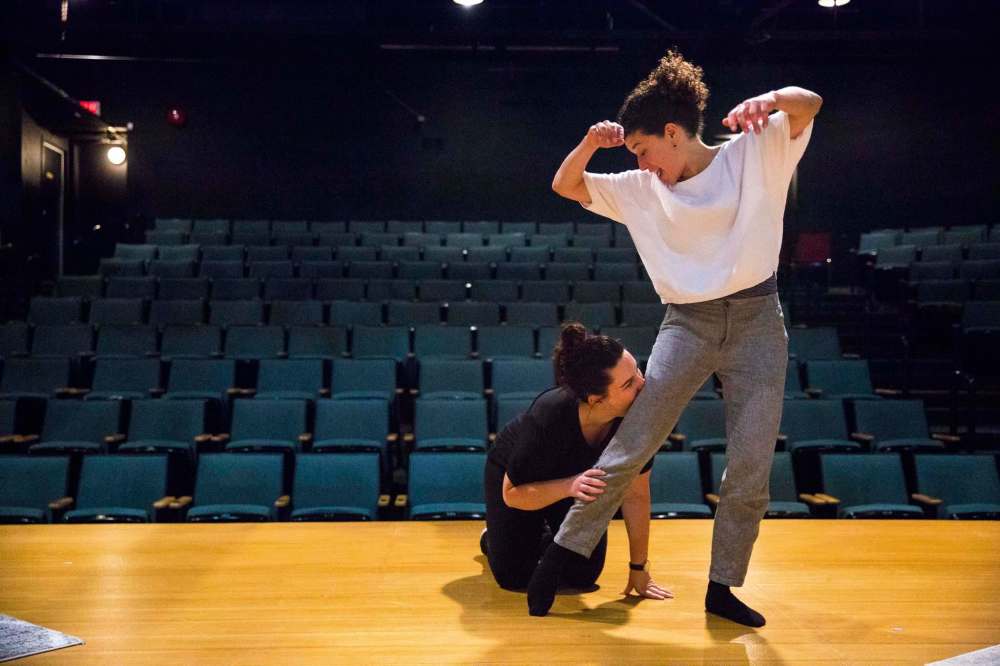
Loewen is the fight director on the Royal Manitoba Theatre Centre’s production of Kat Sandler’s Bang Bang at the Tom Hendry Warehouse Theatre. We’re using the comedic drama’s living-room set where Loewen is showing me, among other things, how to throw a believable punch. (Yes, I am basically becoming a glamorous actress.)
I’d say she’s sharing the tricks of her trade, but what we’re doing on this blustery Thursday morning is a cross between a trick and a skill. “A trick is something that’s very easy to do an replicate, and it’s very safe and effective,” she says. “A skill is something you actually have to get good at.”
It’s likely you’ve seen Loewen-choreographed skirmishes on Winnipeg’s stages. From the kung-fu brawl in last season’s Royal MTC Warehouse production of Vietgone to the tense tussle that occurs in Bang Bang, about a black police officer who shoots an unarmed black teenager, Loewen tells a wide range of stories through her fight choreography. Fighting, after all, is another form of communication, a point she hits on when I ask her why fight direction is important.
“It seems like the thing you’re supposed to say is ‘because it keeps everybody safe.’ And it does. So that feels like the Captain Obvious response,” she says. “But the question that’s interesting to me, in all of my work, is how is any sort of physicality — or embodying of the moment — builds the story. There’s a general rule that when the words run out, then the fight starts because if could keep talking you would.”
A punch or a slap, she says, is part of the conversation that comes out physically.
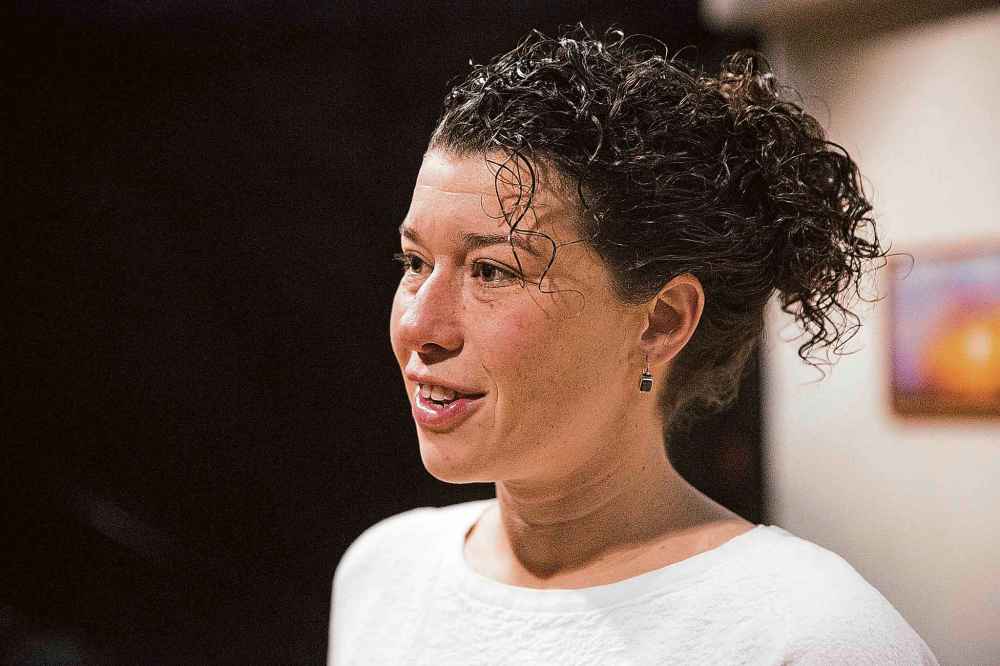
We begin Stage Combat 101 with Loewen punching me in the face. We square our shoulders, facing each other, so she can do an exaggerated John Wayne punch. The puncher shows the audience there is a fist. The punchee, if you will, reacts. Loewen grabs my shoulder with one hand and forms a fist with the other. She brings her fist through along my shoulder line. This is so if she does happen to hit me, she’ll hit me in the shoulder, which is preferable to being hit in the face. “We’ve got to keep the headshot pristine,” she says.
A good punch is all about the moment immediately preceding it, and the moment immediately after.
“We want to show the audience what happens before and what happens after — but we don’t want them to look at what happens in the middle, because what happens in the middle is not true,” she says. “We have to bracket the lie with truths.”
“We want to show the audience what happens before and what happens after– but we don’t want them to look at what happens in the middle, because what happens in the middle is not true… We have to bracket the lie with truths.” – Jacqueline Loewen
As the one being punched, my body masks the lie, or the created sound, which is done via a technique called the knap. (I really struggle with the knap when it’s my turn to punch.) Essentially, once the fist is out of the audience’s view, the puncher opens their hand quickly enough to clap their hands, and then quickly reforms the first so it comes out the other side.
You do not to what I was doing, which was just punching my open hand.
(Because I know you’re trying to do the knap right now as you read this, allow me to pass on a bit of technique from Loewen: close your fist. As you’re bringing your punch across, pretend you’re very quickly trying to snatch something out of your other open palm, and then close your fist again.)
When the person being punched reacts to the punch, there’s a transfer of focus. “The audience watches the aggressor at the beginning, and they’re only watching the victim at the end,” Loewen says.

That’s why it’s more fun to be punched, in my opinion, because the stage really becomes your canvas. Do you fall to the ground? Do you grab your face? Do you spin around fast or slow?
“(The person who is punched) is the reporter of what happened,” Loewen explains.
It’s my turn to throw some punches, which gives me a new appreciation for stage actors who make this look absolutely real; I, meanwhile, nervously narrate everything I’m about to d o: “OK, I’m going to do it, I’m going to punch you, now.” I feel self-conscious, but Loewen gets me to let my hair down, literally. Flying hair looks really good in a stage fight.
Depending on the script Loewen receives, she may have, more or less, fight details to work off of. Shakespeare’s stage directions, for example, may just be “they fight.” Contemporary theatre scripts, on the other hand, tend to be more descriptive and cinematic. “People see stories in different ways now.”
Once we have a handle on how to throw a punch, we work on building a two-move fight sequence. When working with actual professionals, Loewen says she knows when she and the cast have got a fight right “when the performers don’t have to think about it, because in the building of it, it only makes sense that that would be the next thing you do.”
And that’s another reason why fight direction — and a fight director — are important.
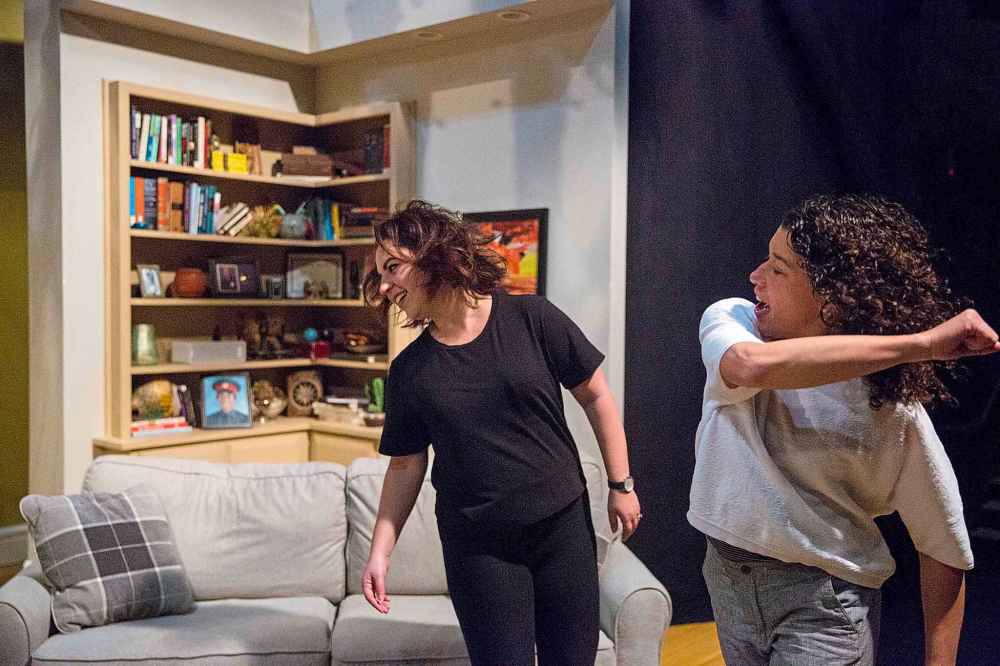
“Wanting to kill someone and make love to them are very opposite sides of a thin coin,” she says. “When you’re talking about these kinds of moments and choreographing them, you want people to emotionally or psychologically feel comfortable with what they’re doing, and that comes out of having a structure. And a structure is super important to the audience because the reading of physical cues that go really fast, like in a fight, those aren’t things that people see very often.”
To that end, Loewen intentionally builds breaths into her fights to allow the audience to catch up. It’s the difference between a melee and a well-choreographed melee.
“You want to be drawn into the choices the characters are making in that moment,” she says. “Like, ‘he’s got me in a headlock, all I have is my arm free, I need to start hitting him on the side.’ That’s what the physical dialogue is.”
Eventually, I have her in a bear hug around her waist, and she’s “kneeing” me in the side, and the whole thing feels weirdly comfortable, even though we’re pretending to kick each other’s asses. That’s in part because of how close we are to each other. If we were standing further apart, her knee would actually make contact with my body. “Generally, the closer you are, the safer you’ll be,” Loewen says.
A metaphor for any relationship, really.
jen.zoratti@freepress.mb.ca
Twitter: @JenZoratti

Jen Zoratti
Columnist
Jen Zoratti is a Winnipeg Free Press columnist and author of the newsletter, NEXT, a weekly look towards a post-pandemic future.





